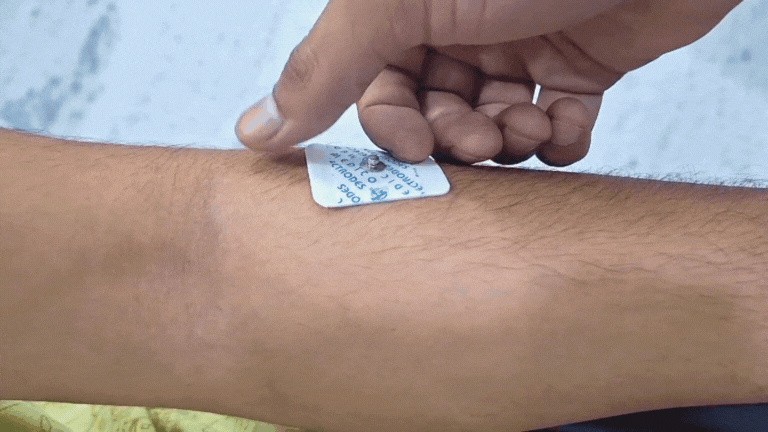Using Gel Electrodes#
Overview#
Gel electrodes are type of electrodes that are applied on the skin surface to transmit the electrical signals present at the skin surface to a recording or monitoring device. These electrodes use a conductive hydrogel to improve the interface between the Ag-AgCl electrode and the skin, enhancing signal quality by reducing impedance and improving electrical contact. These are often used to record biopotential signals like Electrocardiography (ECG), Electroencephalography (EEG), Electromyography (EMG), and Electrooculography (EOG).
Key components in a gel electrode#
Electrode material: The electrode itself is typically made of a conductive material such as Ag-AgCl, which is commonly used due to its stability and biocompatibility.
Hydrogel: A hydrogel is applied to the electrode or embedded within it. This gel helps maintain a consistent electrical connection with the skin by reducing the impedance at the interface.
Backing: Gel electrodes have various types of backing like foam, cloth, and cleartape.
Adhesive: Gel electrodes has a sticky glue like interface called adhesive that allows it to firmly attach to your skin, it can be of different types like hydrogel (where hydrogel acts both as a conductive gel and adhesive), standard, and aggressive.
Types of gel electrodes#
1. Classification on basis of water-content#
Below are the gel electrodes categorised on the basis of the water content present in the hydrogel:
a. Liquid gel electrodes#
These electrodes have hydrogel with higher water content which provide excellent conductivity but can dry out over time, reducing their effectiveness. They are preferred to be used if you have a dry skin and/or you want to record the biopotential data for a short time duration.
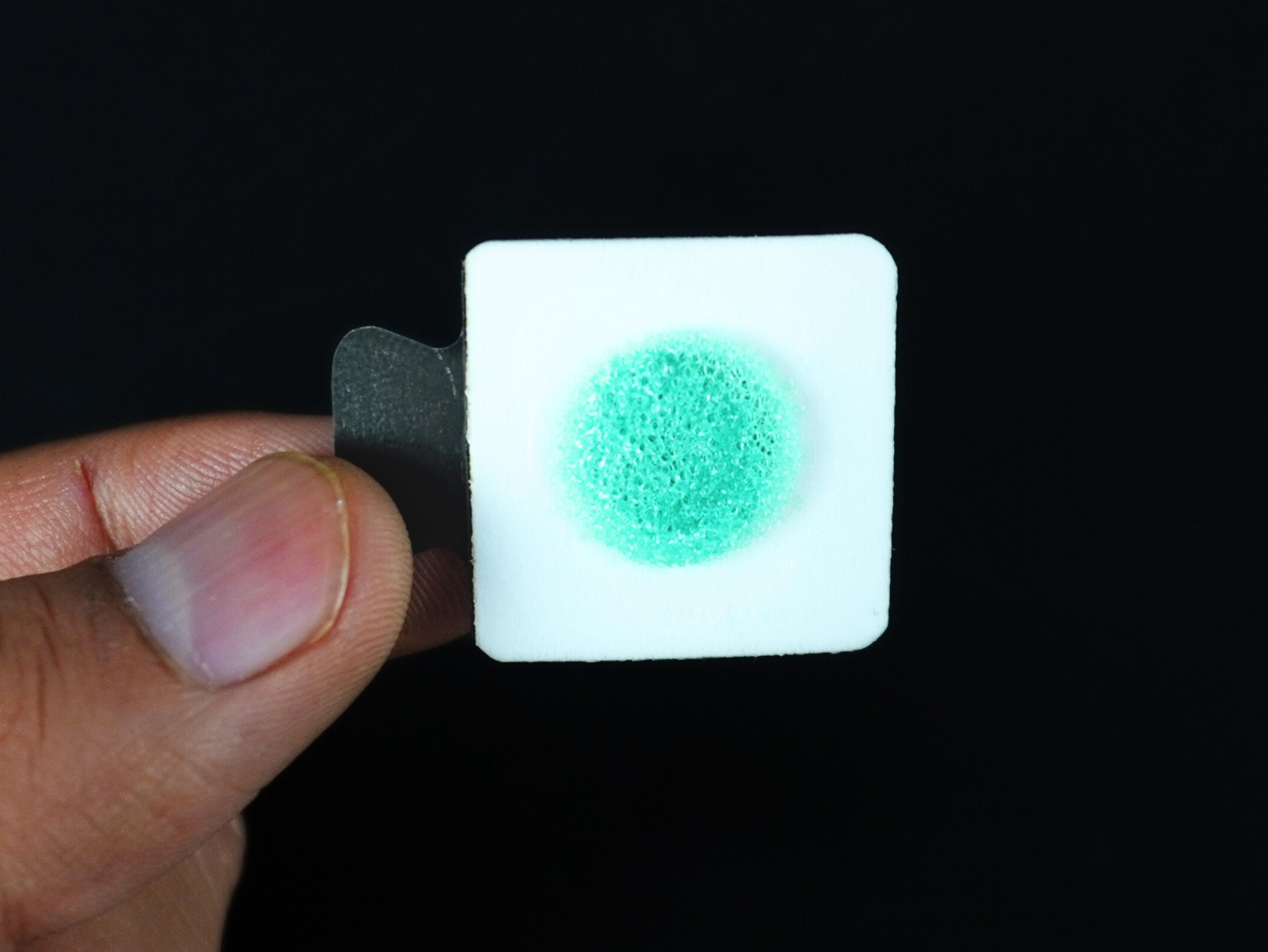
b. Solid gel electrodes#
These electrodes contain hydrogel that is more solid or jelly-like. They are less prone to drying out as compared to liquid gel electrodes and have a strong adhesion.
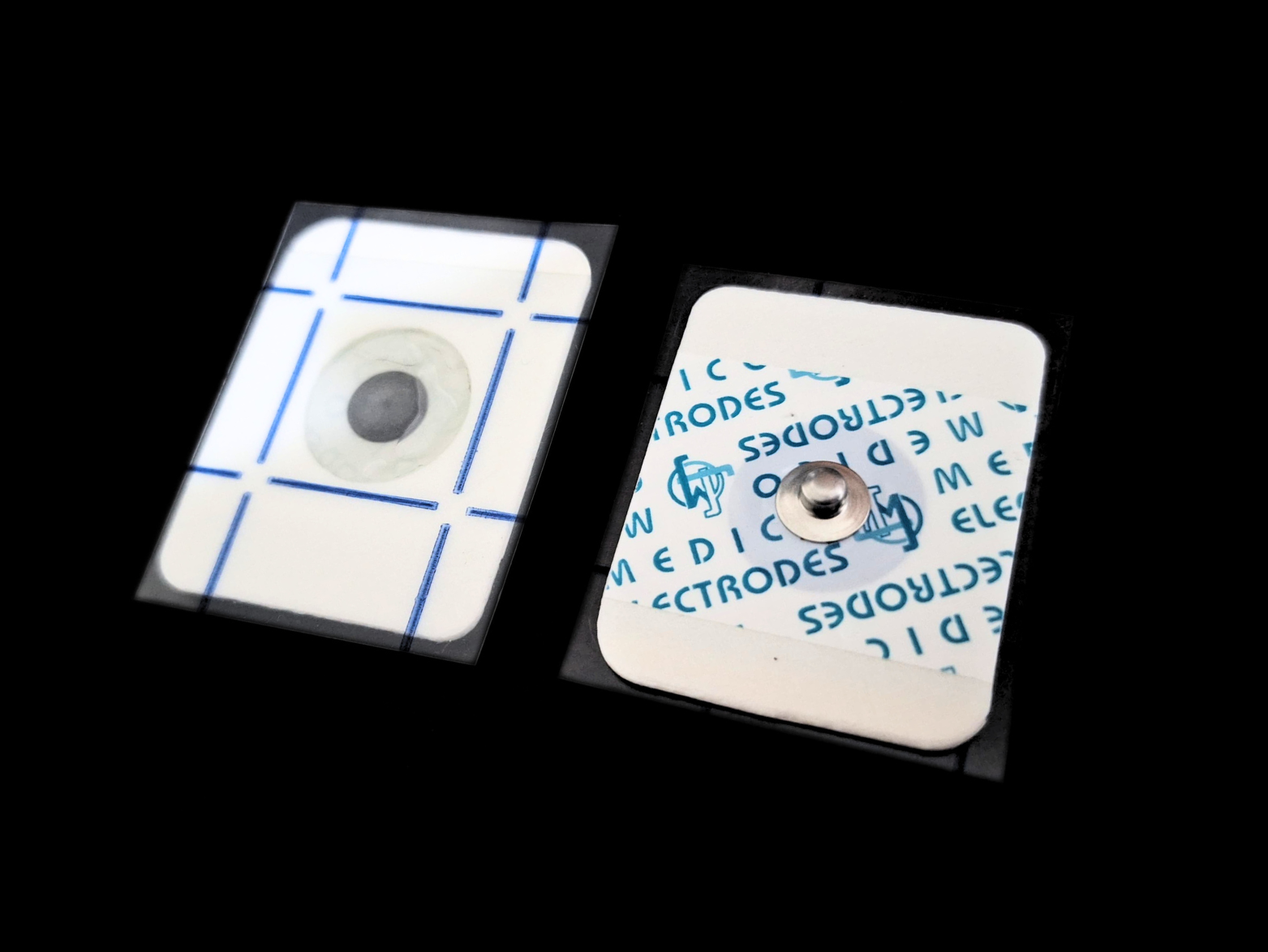
c. Full-surface hydrogel electrodes#
This is a type of solid gel electodes where hydrogel has minimal water content, covers the entire electode surface and acts as an adhesive. These electrodes are more comfortable for long-term monitoring. They offer good adhesion, conductivity and are less likely to cause skin irritation.
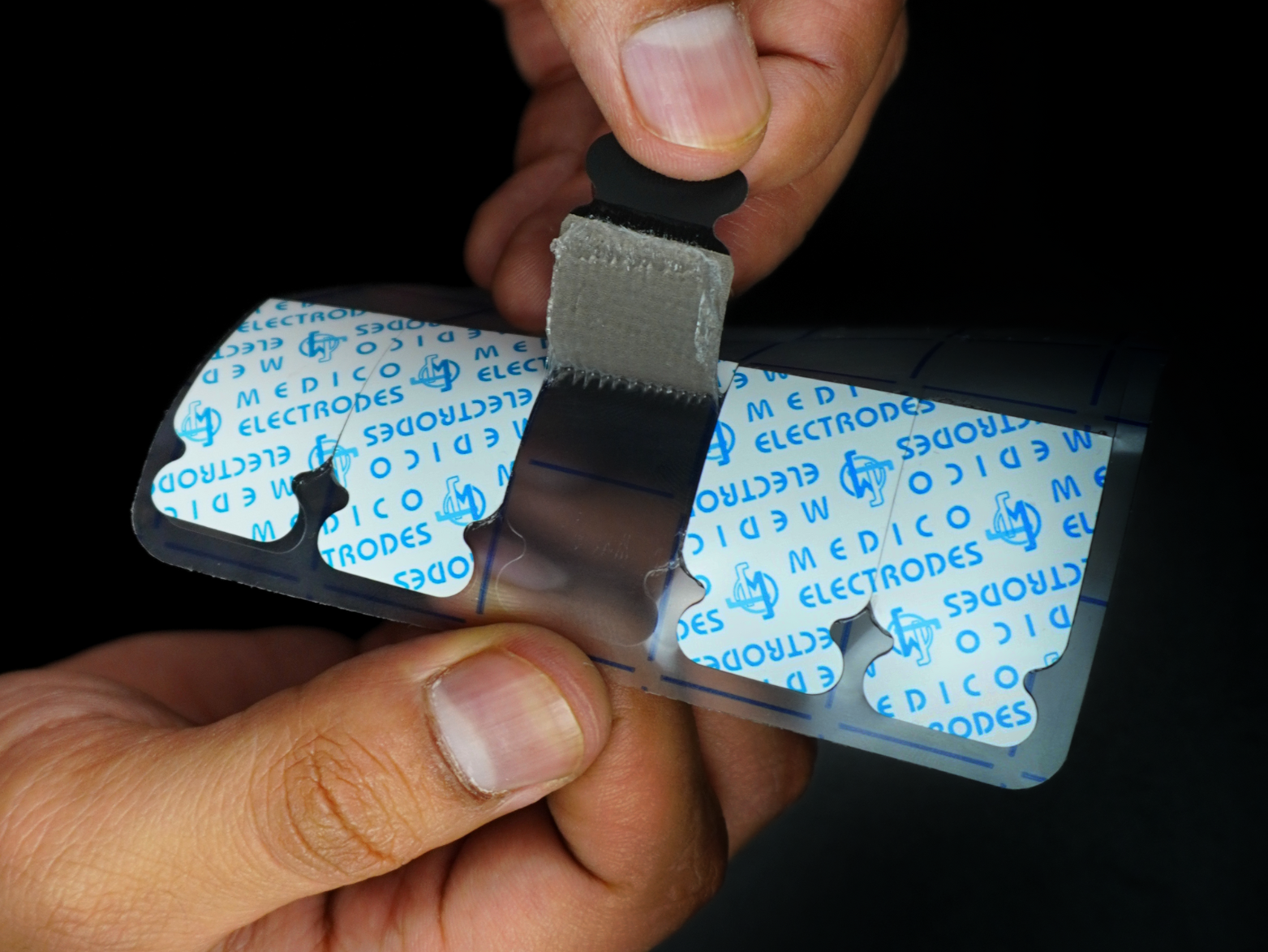
2. Classification on the basis of connectivity#
a. Connecting via snap#
Some electrodes have a metallic snap connector on them which enables you to connect BioAmp Snap Cable by snapping the dry electrode part of the cable onto the electrode.
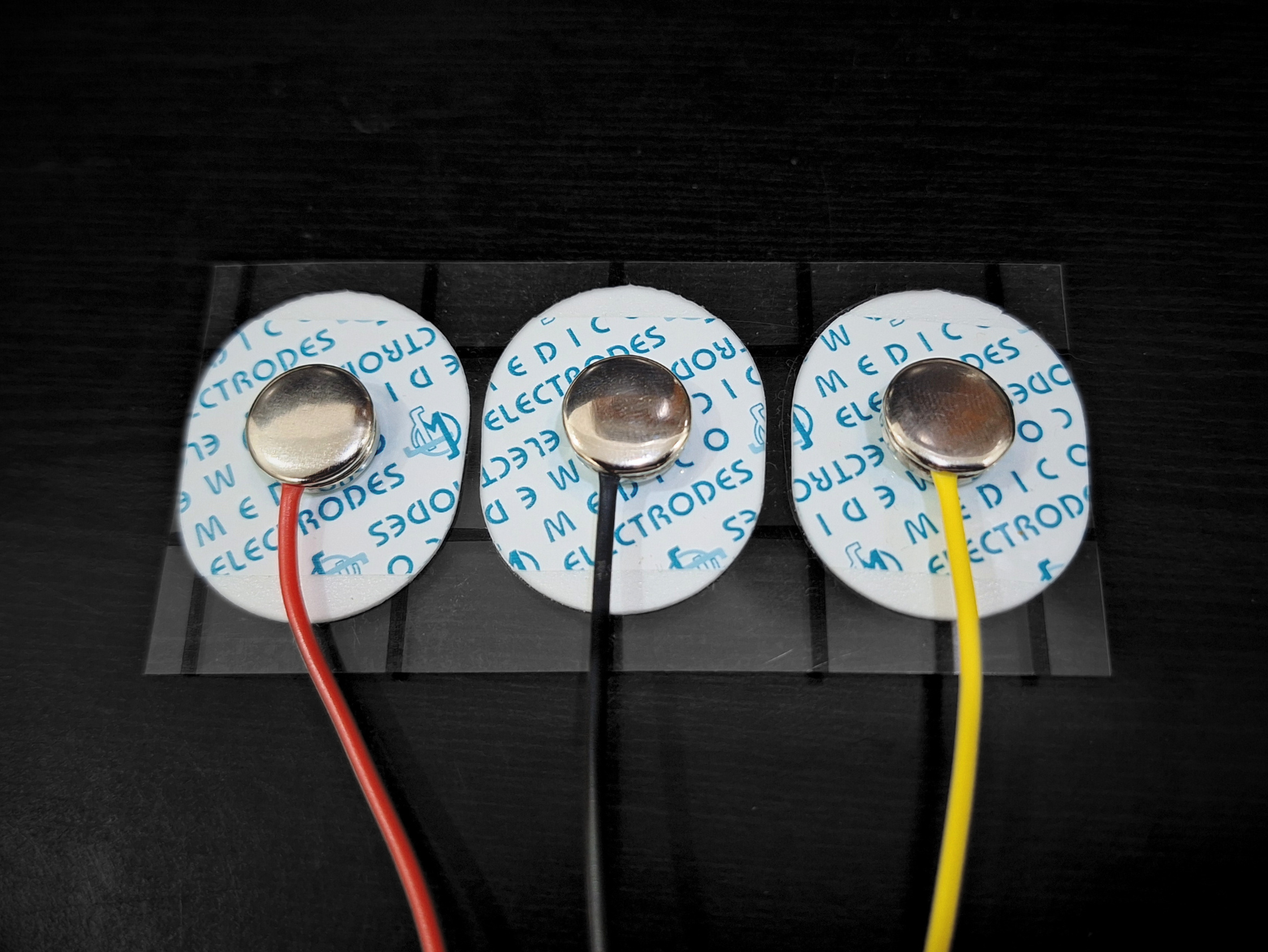
b. Connecting via tab#
Some electrodes do not have the metallic snap connector on them, instead they have a conductive tab extending from the surface of the electrode. You can directly use BioAmp Alligator Cable to connect to the tab.
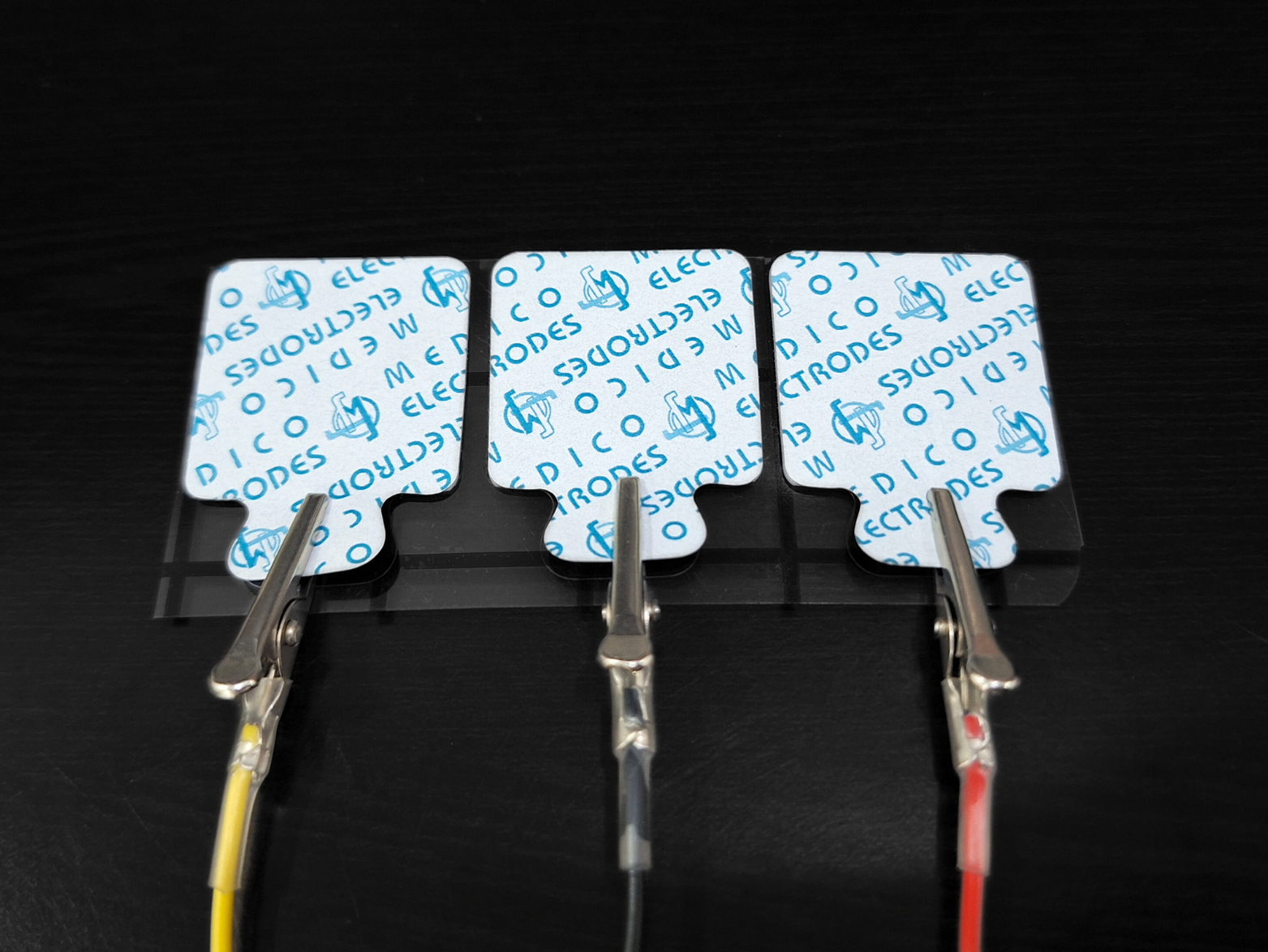
Using the electrodes#
Determine the target area from where you want to record the biopotential signals.
Warning
For people having sensitive skin, it is recommended to use either gel electrodes with hydrogel/standard adhesive or use BioAmp Bands.
1. Skin Preparation#
Remove any excessive hair on the targeted area. Apply Nuprep skin preparation gel on the skin surface where electrodes would be placed to remove dead skin cells and clean the skin from dirt. After rubbing the skin surface thoroughly, clean it with an alcohol wipe or a wet wipe.
For more information, please check out detailed step by step Skin Preparation Guide.
Note
Always ensure that the prepared skin area is dry prior to applying the gel electrodes.
2. Connecting the cable#
Connect the BioAmp Snap/Alligator Cable on the gel electrodes.
3. Electrodes placement#
Peel of the plastic backing and place the electrodes on your targeted skin surface as per the connections directed with every BioAmp hardware.
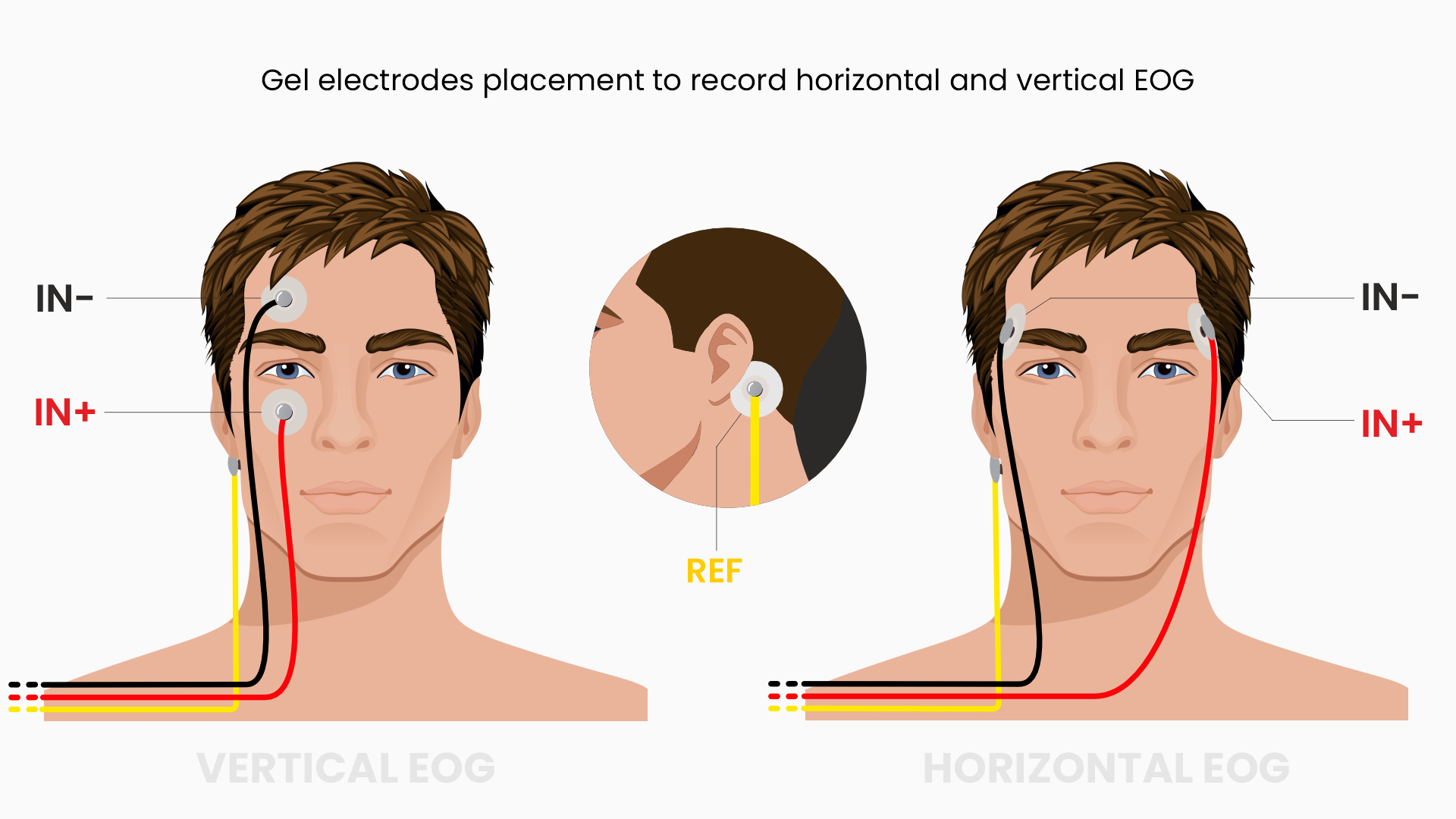
Gel electrodes placement for EOG signal recording#
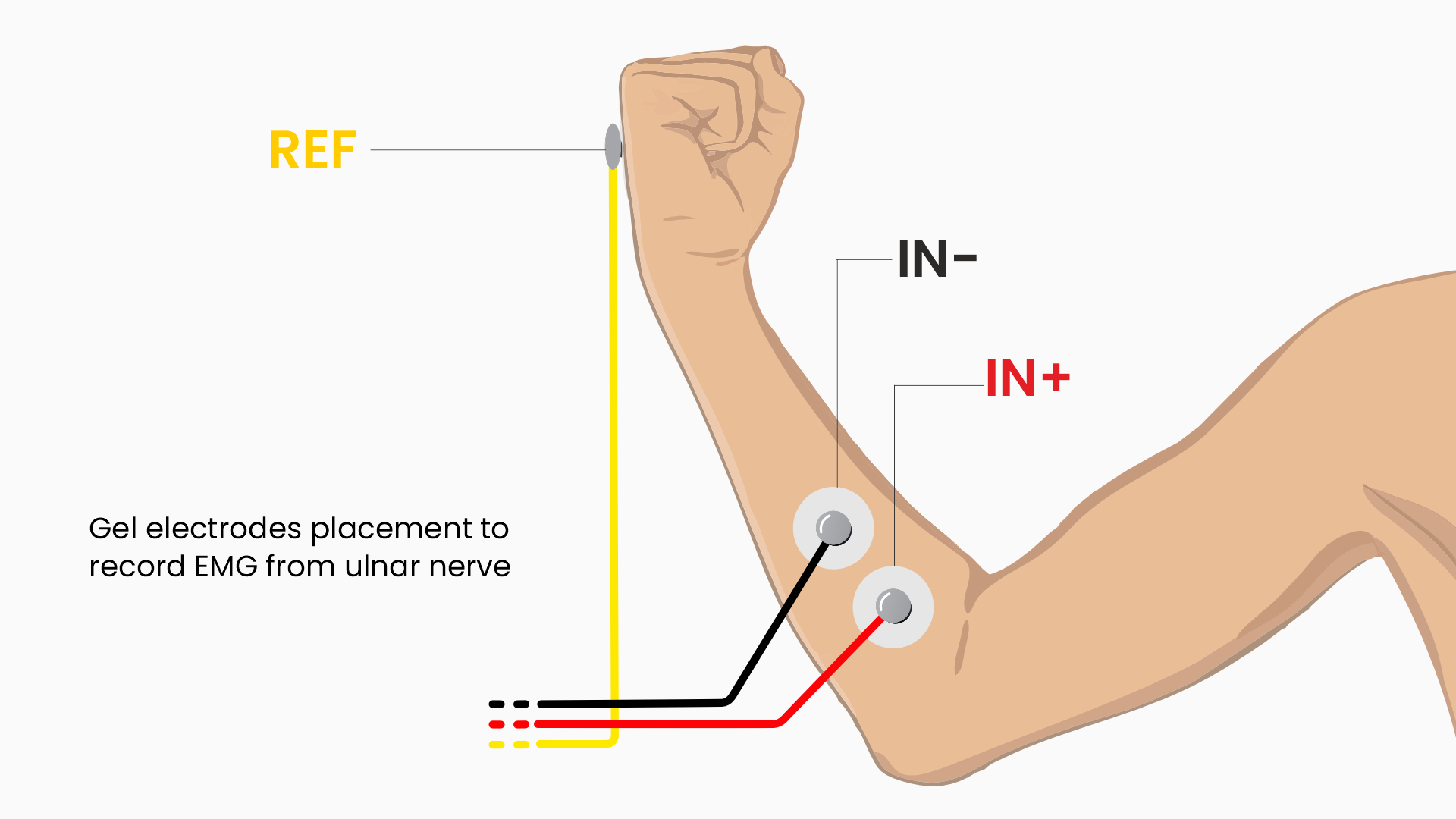
Gel electrodes placement for EMG signal recording#
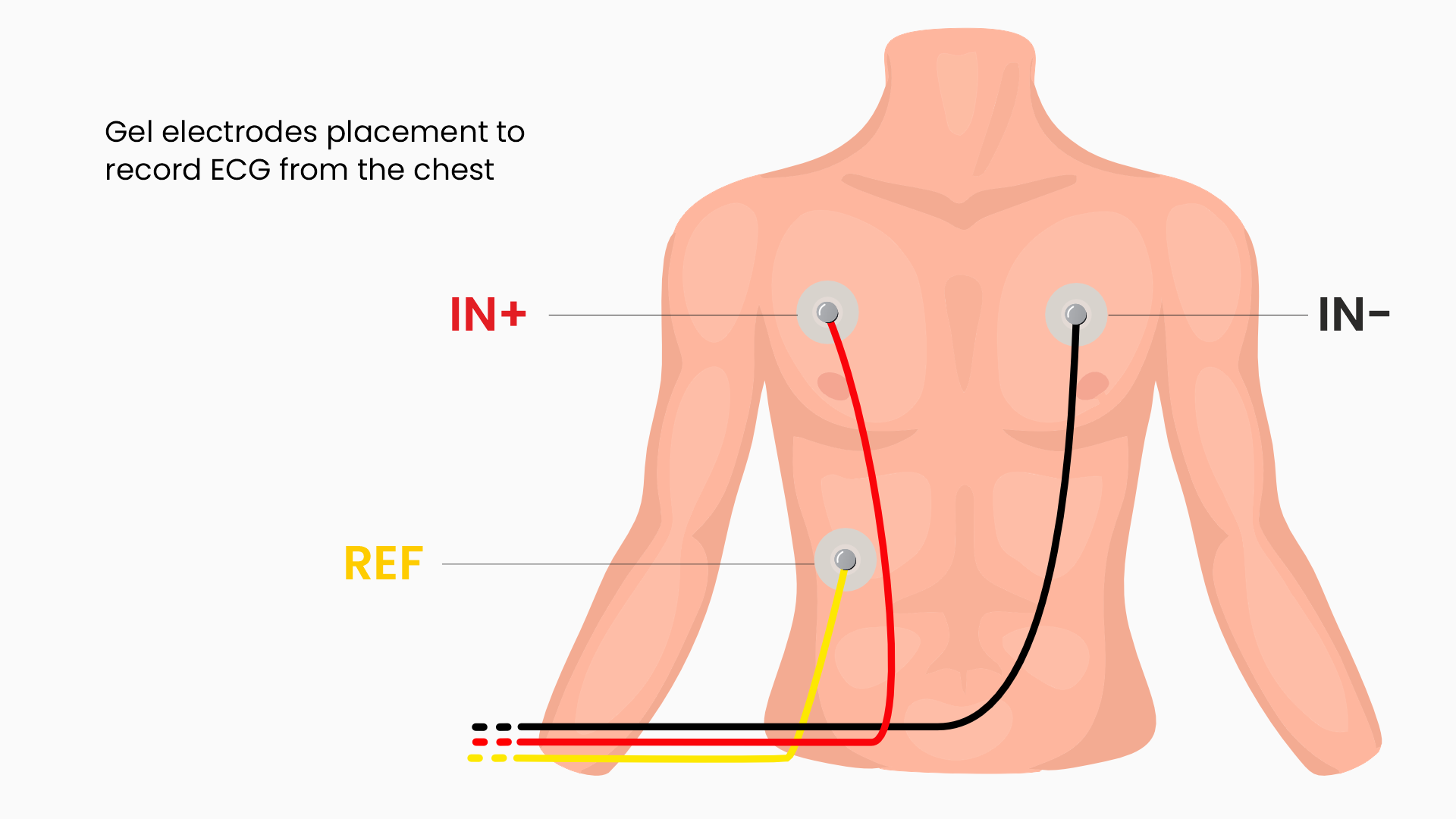
Gel electrodes placement for ECG signal recording#
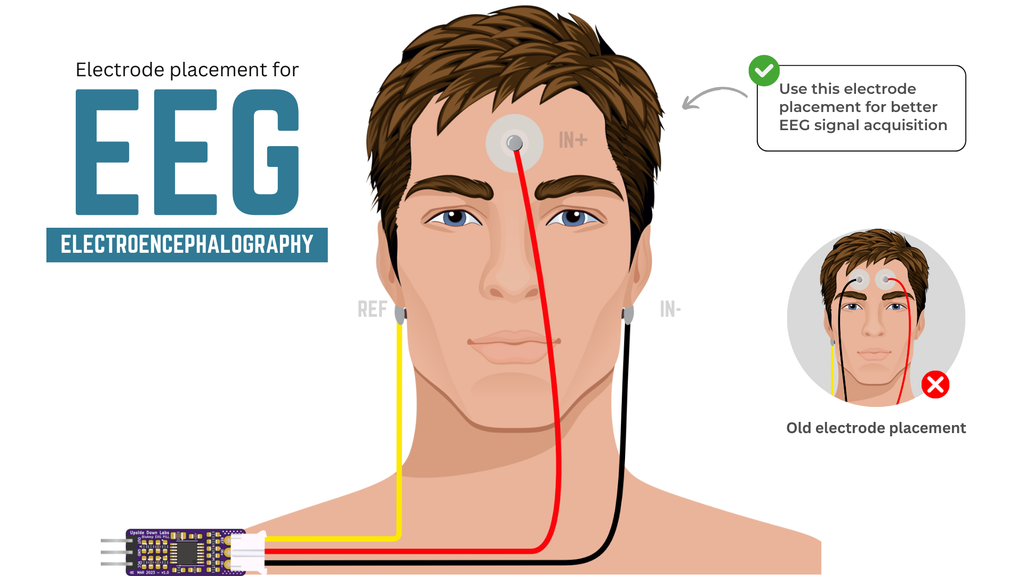
Gel electrodes placement for EEG signal recording#
Tip
While placing the gel electrodes on the skin, make sure to place the non-sticky tab of the electrode in the direction opposite to your hair growth. This allows you to remove the electrodes easily without pulling off much body hair.
Removing the electrodes#
Once you are done with your signal recording, pull the non-sticky tab gently in the direction of your body hair growth to remove the gel electrode from the skin.
To remove the gel residue with a wet wipe/alcohol swab.
To remove the adhesive residue apply some oil to your skin and rub it gently for a couple of minutes to dissolve the adhesive, and then wipe it off with a dry cloth.
Important
You should not use water & soap to clean the adhesive residue, it is oil soluble and should be dissolved with oil before removing it with dry cloth. Using water and soap can make it stick harder and irritate your skin.
